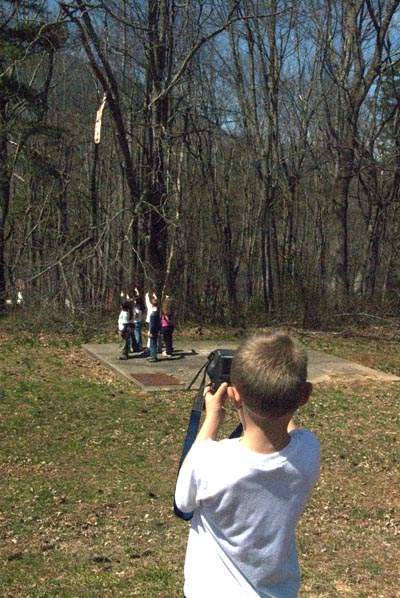
There are a variety of reasons to incorporate photography into the science classroom, among them:
 |
| In this shot, a first grader is using a digital camera to capture an image of his classmates pointing at a branch hanging in a tree. The students' assignment had been to find things that were moving or could move. |
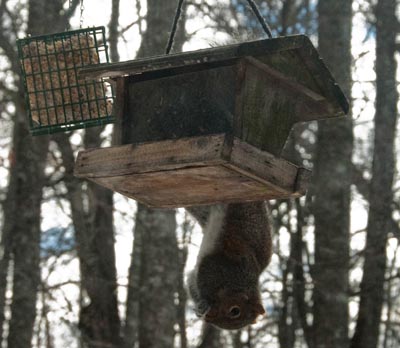 |
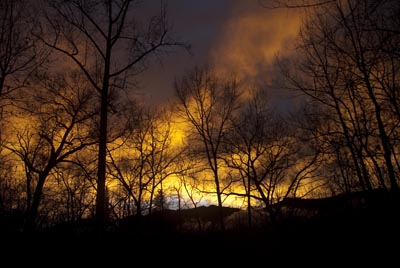 |
| Documenting objects and events in the local environment allows students to see science all around them. | Digital photography can play an integral part in keeping the spirit of wonder alive in the hearts and minds of our students. |
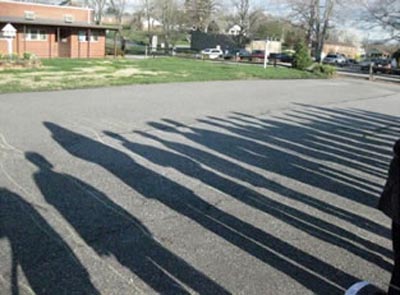
|
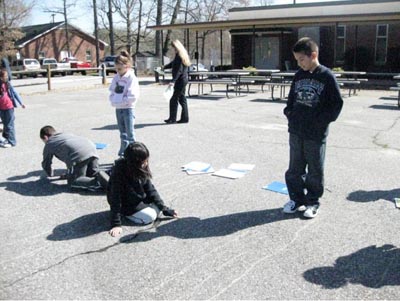 |
| Students' initial enthusiasm for taking interesting images becomes a seed for further study. These elementary students are intrigued by their shadows on the playground. | In this instance, the students' interest inspired further inquiry, and the photographs give a visual representation of their communal exploration. |
|
|
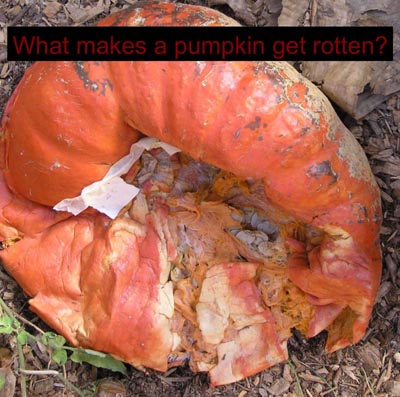 |
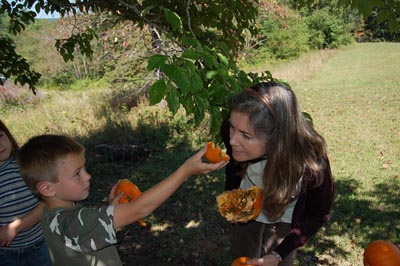 |
| The above question, from students' science questions presentation, arose when students were walking around the school yard with their camera looking for science content in their environment. | The pumpkin image led to significant community engagement and exploration. The power of an image like this is that it directly connects in the students' minds the emotional appeal of working in community with the science content they were studying. |
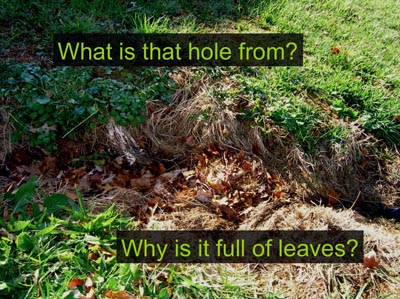 |
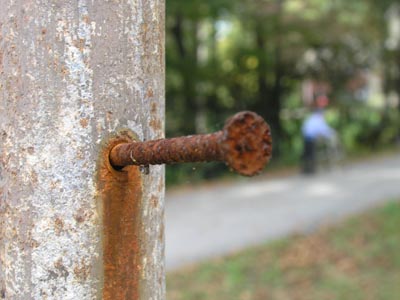 |
| When students are given cameras, they begin to pay attention to things they otherwise would have taken for granted. The above questions arose from a student's photograph of a hole on the playground that had filled with dead leaves. | A simple image of rust can lead to a variety of inquiry activities and explorations. Why do some metals rust and others don't? What would be the best way to get something to rust the most quickly? What is the best way to prevent a metal nail from rusting? |
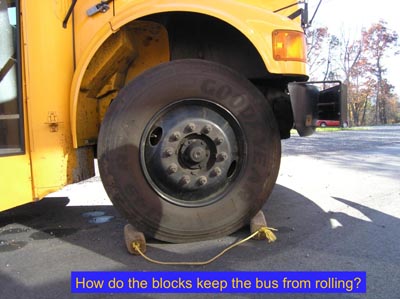 |
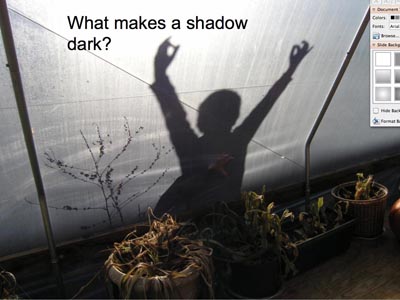 |
| The Science Photoessay integrates students' images with the text of their questions. This still from a first graders' image led to an extended discussion that included many ideas from curricula other than science: who owns the buses, who gets to drive them, how much time different people spend riding the bus, and bus rules and safety. | In addition to the language skills that are built when students write their own questions to go with their photos, many digital images can be used to inspire creative writing. What would it be like to live as a shadow? |
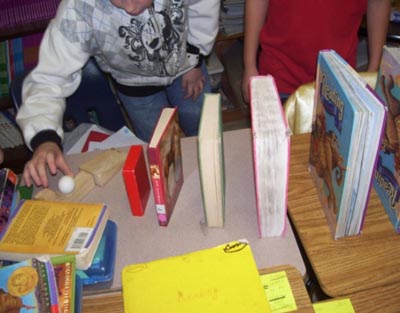 |
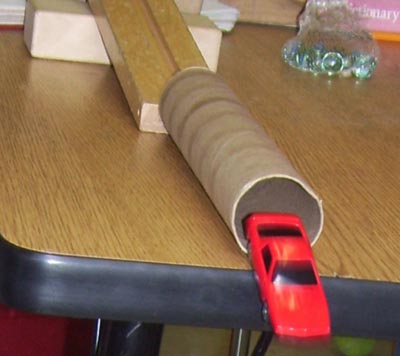 |
| Scientists routinely collect photographic data and use visual imagery to present results. Using photography in science models the way science is actually done in the world. The photograph above documents a forces and motion investigation. | Often, a photograph can reveal information about the world that we cannot pick up with our senses. How does the car move as it exits the tube and falls through the air? |
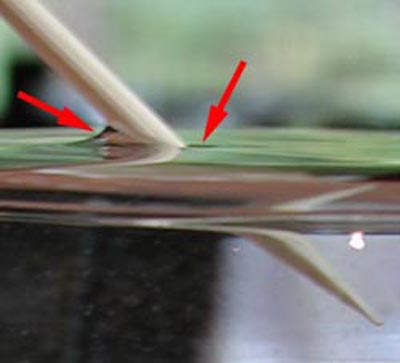 |
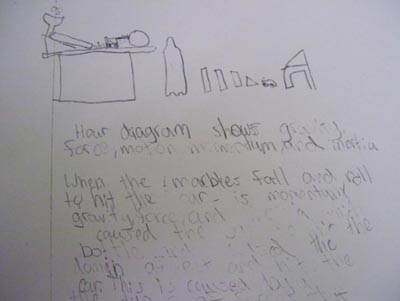 |
| Since science content is embedded in the physical world, it makes sense to have student create visuals to represent their understanding. In this image, for example, the student has demonstrated his knowledge of cohesion (the water sticking to itself) and adhesion (water sticking to wood). | Students can also be asked to interpret photographs and represent them in more abstract forms such as drawing and writing. Here a student documents her forces and motion investigation using a diagram derived from an intial photograph. |